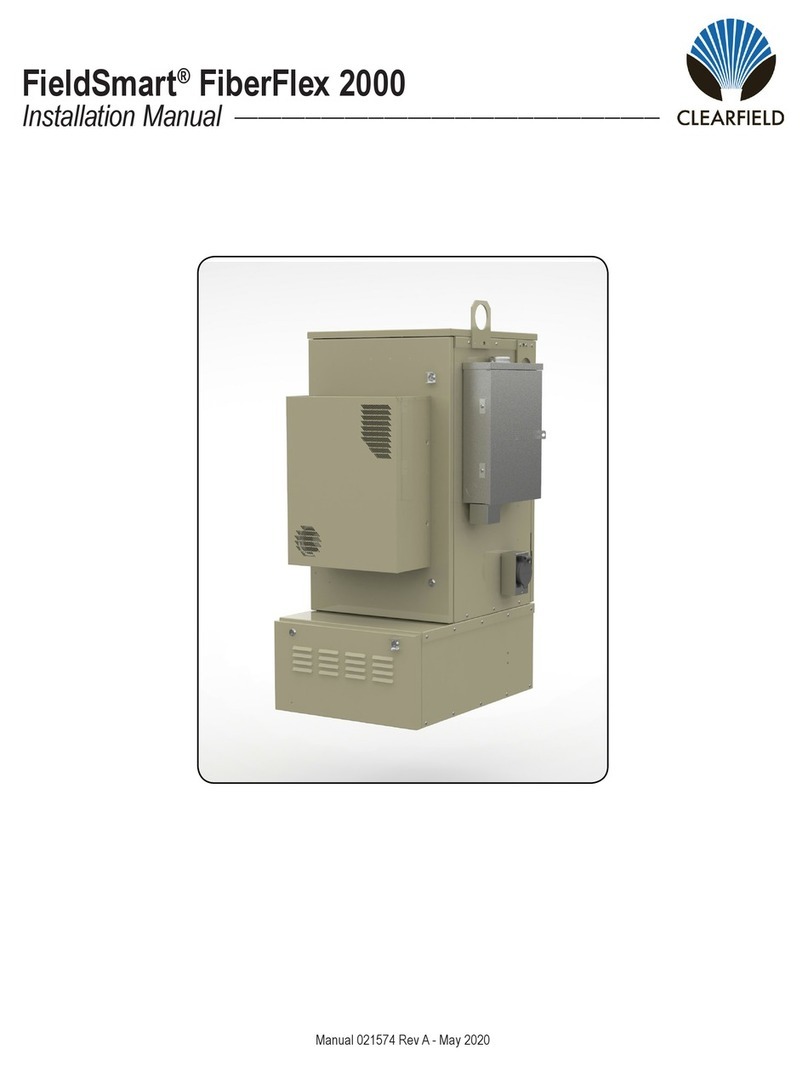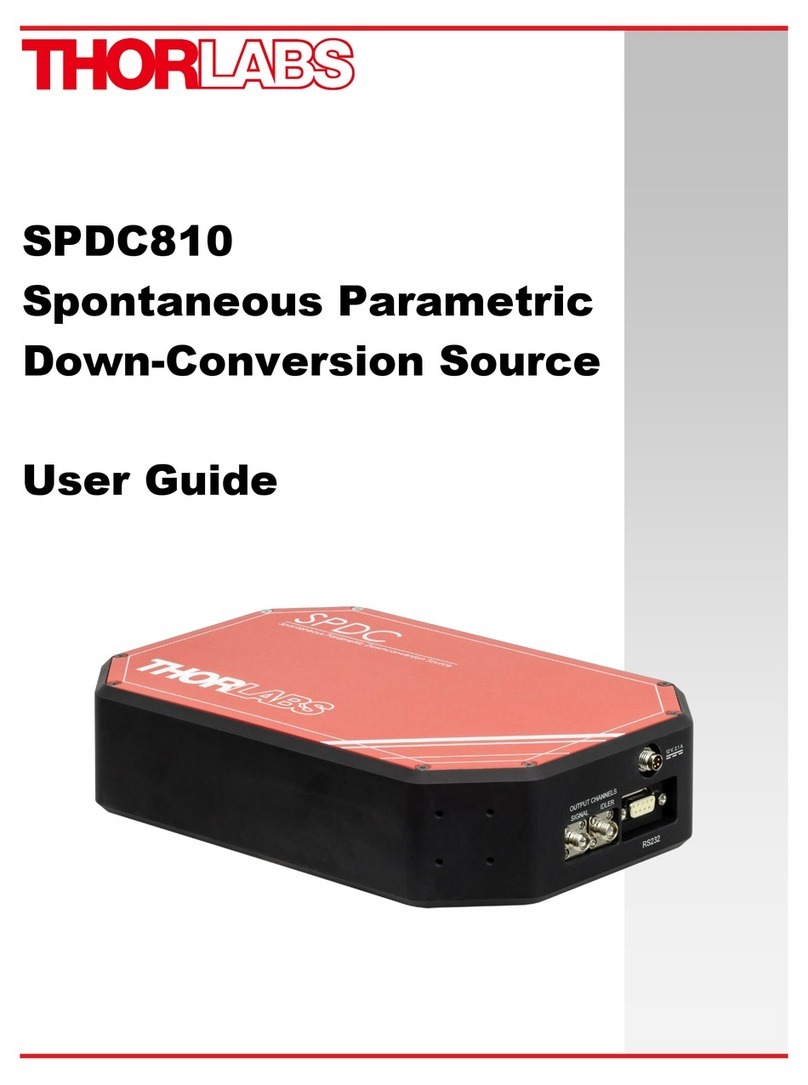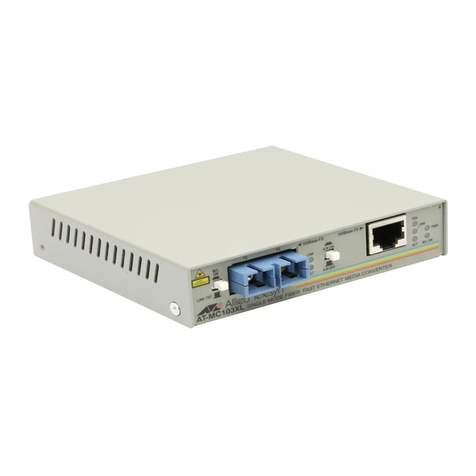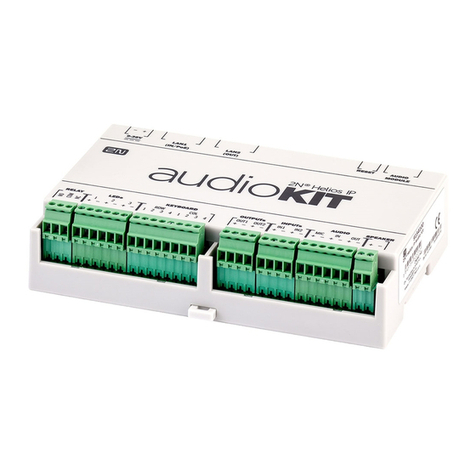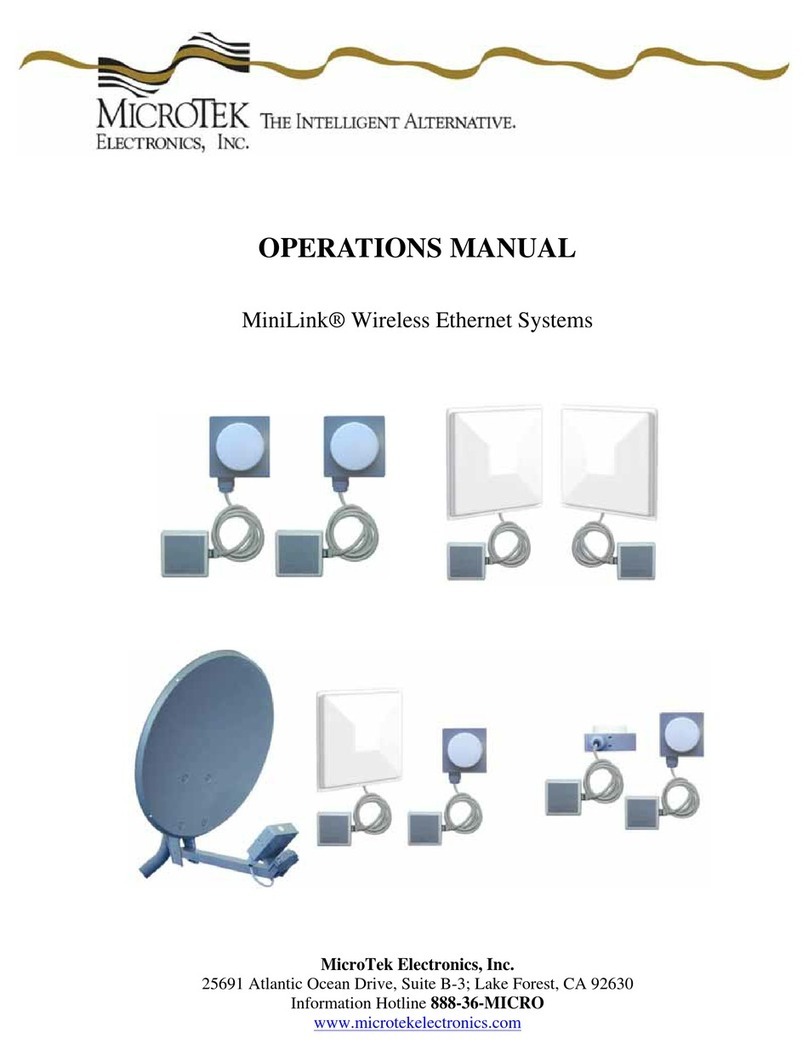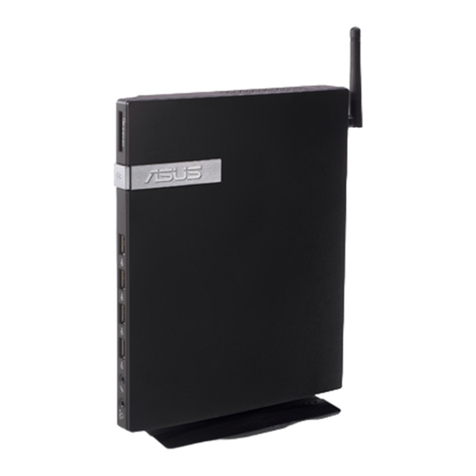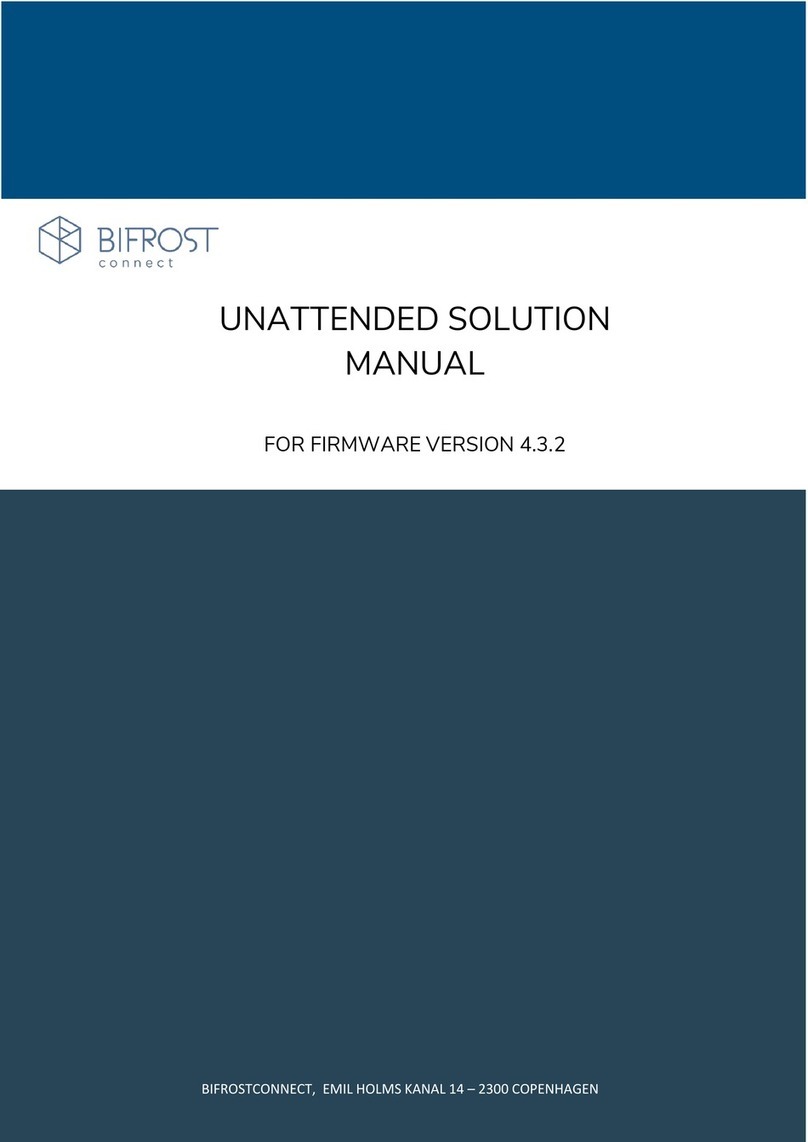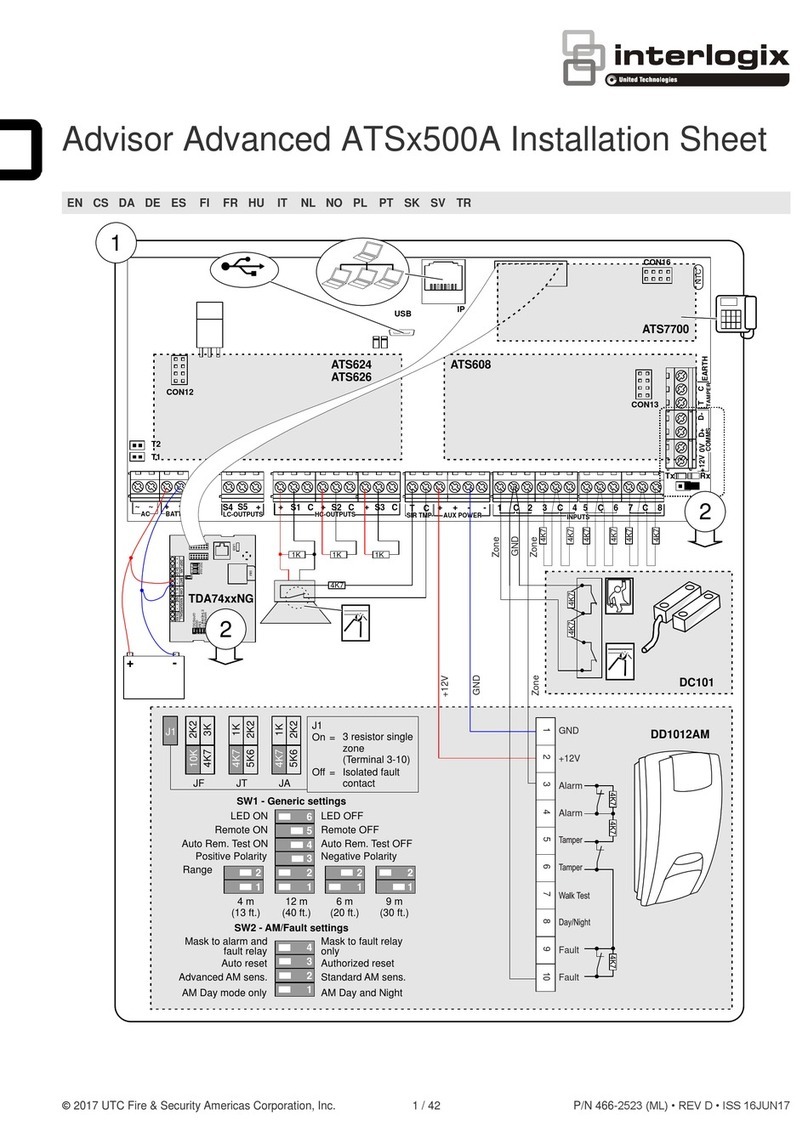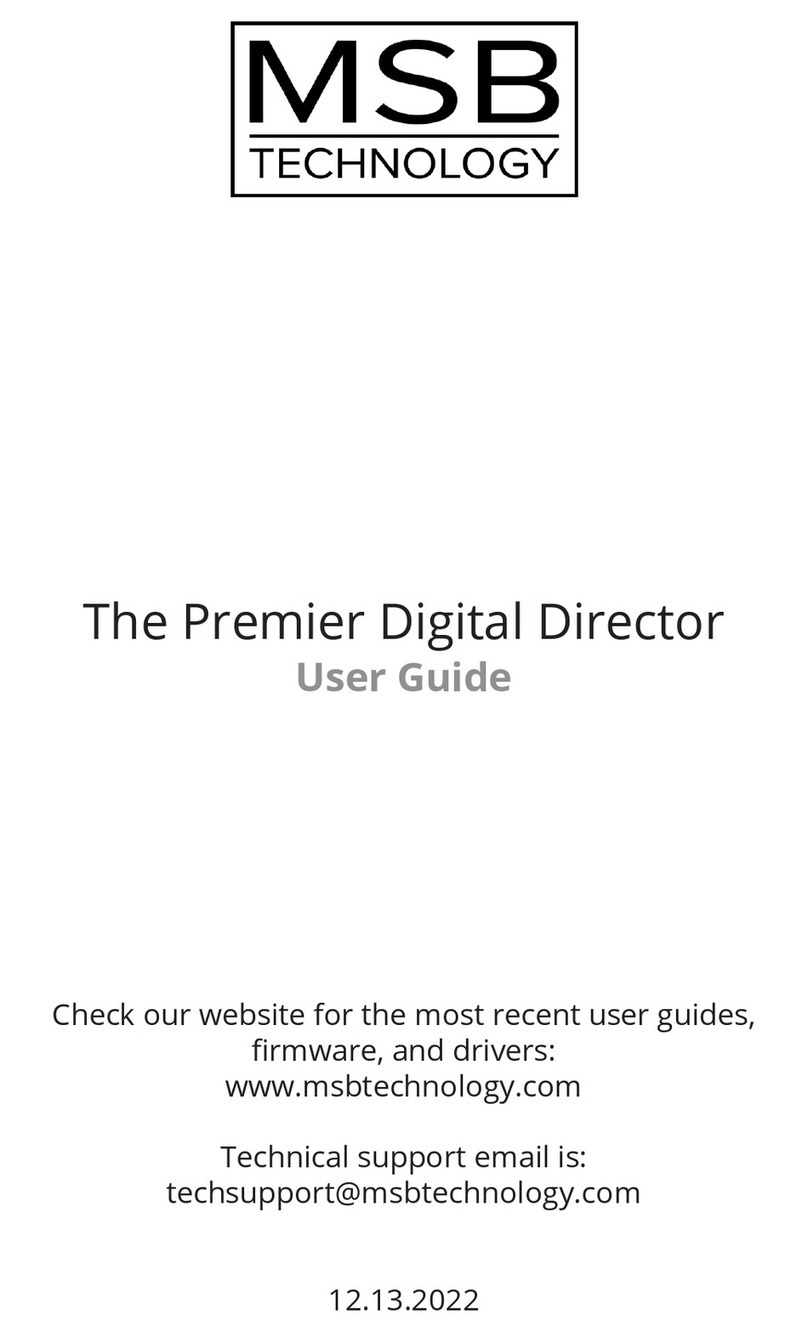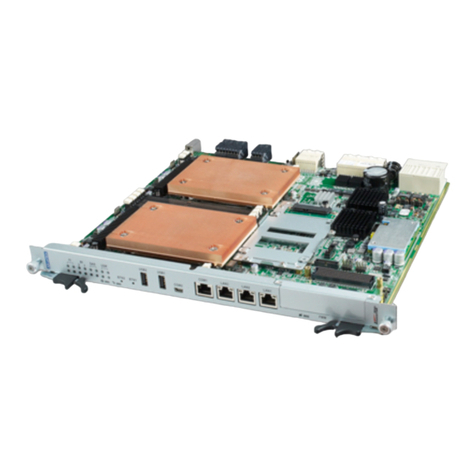DataDirect Networks EF2915 Series User manual

EF2915 Series User Guide

P/N 801-000013 REV 53
EF2915 Series
User Guide

(C) 2002-2007 iQstor Networks, Inc. All rights reserved.
This publication, the EF2915 Series printed circuit boards, and related documentation are protected by Federal copyright law, with
all rights reserved. No part of this product may be copied, photocopied, reproduced, stored in a retrieval system, translated,
transcribed or transmitted, in any form or by any means manual, electric, electronic, electromagnetic, mechanical, optical or other-
wise, in whole or in part without prior explicit written consent from iQstor Networks, Inc.
Included software, including all files and data, and the magnetic media on which it is contained (the “Licensed Software”), is
licensed to you, the end user, for your own internal use. You do not obtain title to the licensed software. You may not sublicense,
rent, lease, convey, modify, translate, convert to another programming language, decompile, or disassemble the licensed software
for any purpose.
You may a) only use the software on a single machine; b) copy only the software into any machine-readable or printed form for
backup in support of your use of the program on the single machine; and c) transfer the programs and license to use by another
party if the other party agrees to accept the terms and conditions of the licensing agreement. If you transfer the programs, you must
at the same time either transfer all copies whether in printed or machine-readable form to the same party or destroy any copies not
transferred.
Limitation of Liability
Information presented by DataDirect Networks, Inc. in this manual is believed to be accurate and reliable. However, DataDirect
Networks, Inc. assumes no responsibility for its use. No license is granted by implication or otherwise to any rights of DataDirect
Networks, Inc.
Product specifications and prices are subject to change without notice.
Trademark References
DataDirect Networks and the DataDirect Networks logo are registered trademarks of DataDirect Networks, Inc. The EF2915
Series are trademarks of DataDirect Networks, Inc.
Sun Microsystems and Sun Workstation are registered trademarks of Sun Microsystems, Inc. Solaris, OpenWindows, and SPARC-
station are trademarks of Sun Microsystems, Inc.
All SPARC trademarks, including the SCD Compliant Logo, are trademarks or registered trademarks of SPARC International, Inc.
UNIX is a registered trademark of AT&T.
Registered Rights Legend
Use, duplication, or disclosure by the Government is subject to restrictions as set forth in subparagraph (c)(1)(ii) of the Rights in
Technical Data and Computer Software clause at DFARS 52.227 7013 (Oct. 1988) and FAR 52.227 19(c) (Jun. 1987).
ii EF2915 Series User Guide

EF2915 Series User Guide iii
Contents
Chapter 1 About this Guide 1
Intended Audience. . . . . . . . . . . . . . . . . . . . . . . . . . . . . . . . . . . . . . . . . . . . . . . . . . . . . . . . . . . . . . 2
Organization of This Guide. . . . . . . . . . . . . . . . . . . . . . . . . . . . . . . . . . . . . . . . . . . . . . . . . . . . . . . 2
Notes, Cautions, and Warnings . . . . . . . . . . . . . . . . . . . . . . . . . . . . . . . . . . . . . . . . . . . . . . . . . . . . 3
Typographical Conventions. . . . . . . . . . . . . . . . . . . . . . . . . . . . . . . . . . . . . . . . . . . . . . . . . . . . . . . 4
DataDirect Networks Welcomes Your Comments . . . . . . . . . . . . . . . . . . . . . . . . . . . . . . . . . . . . . 4
Chapter 2 The EF2915 Series Storage System 5
What Is the DataDirect Networks SAN Solution? . . . . . . . . . . . . . . . . . . . . . . . . . . . . . . . . . . . . . 6
Java-Based Graphical User Interface. . . . . . . . . . . . . . . . . . . . . . . . . . . . . . . . . . . . . . . . . . . . . . . . 6
Before You Begin . . . . . . . . . . . . . . . . . . . . . . . . . . . . . . . . . . . . . . . . . . . . . . . . . . . . . . . . . . . . . . 6
SAN Overview. . . . . . . . . . . . . . . . . . . . . . . . . . . . . . . . . . . . . . . . . . . . . . . . . . . . . . . . . . . . . . . . . 7
Elements of a SAN . . . . . . . . . . . . . . . . . . . . . . . . . . . . . . . . . . . . . . . . . . . . . . . . . . . . . . . . . 8
Example – Fibre Channel SAN . . . . . . . . . . . . . . . . . . . . . . . . . . . . . . . . . . . . . . . . . . . . . . . . 9
Fibre Channel Overview . . . . . . . . . . . . . . . . . . . . . . . . . . . . . . . . . . . . . . . . . . . . . . . . . . . . . . . . 10
Who is Fibre Channel? . . . . . . . . . . . . . . . . . . . . . . . . . . . . . . . . . . . . . . . . . . . . . . . . . . . . . 11
How Does it Work?. . . . . . . . . . . . . . . . . . . . . . . . . . . . . . . . . . . . . . . . . . . . . . . . . . . . . . . . 11
Fibre Channel Topologies . . . . . . . . . . . . . . . . . . . . . . . . . . . . . . . . . . . . . . . . . . . . . . . . . . . 12
Types of Fibre Channel Ports . . . . . . . . . . . . . . . . . . . . . . . . . . . . . . . . . . . . . . . . . . . . . . . . 12
Fibre Channel Standards . . . . . . . . . . . . . . . . . . . . . . . . . . . . . . . . . . . . . . . . . . . . . . . . . . . . 13
Introduction to RAID Technology. . . . . . . . . . . . . . . . . . . . . . . . . . . . . . . . . . . . . . . . . . . . . . . . . 14
RAID Level 0 . . . . . . . . . . . . . . . . . . . . . . . . . . . . . . . . . . . . . . . . . . . . . . . . . . . . . . . . . . . . 14
RAID Level 1 . . . . . . . . . . . . . . . . . . . . . . . . . . . . . . . . . . . . . . . . . . . . . . . . . . . . . . . . . . . . 15
RAID Level 1+0 . . . . . . . . . . . . . . . . . . . . . . . . . . . . . . . . . . . . . . . . . . . . . . . . . . . . . . . . . . 15
RAID Level 3 . . . . . . . . . . . . . . . . . . . . . . . . . . . . . . . . . . . . . . . . . . . . . . . . . . . . . . . . . . . . 16
RAID Level 5 . . . . . . . . . . . . . . . . . . . . . . . . . . . . . . . . . . . . . . . . . . . . . . . . . . . . . . . . . . . . 17
RAID Level 50 . . . . . . . . . . . . . . . . . . . . . . . . . . . . . . . . . . . . . . . . . . . . . . . . . . . . . . . . . . . 18
RAID Level 6 . . . . . . . . . . . . . . . . . . . . . . . . . . . . . . . . . . . . . . . . . . . . . . . . . . . . . . . . . . . . 19
Key Terms Used in This Guide. . . . . . . . . . . . . . . . . . . . . . . . . . . . . . . . . . . . . . . . . . . . . . . . . . . 21
EF2915 Series Specifications . . . . . . . . . . . . . . . . . . . . . . . . . . . . . . . . . . . . . . . . . . . . . . . . . . . . 23
Chapter 3 Setting Up the EF2915 Series System 25
Selecting an Installation Location . . . . . . . . . . . . . . . . . . . . . . . . . . . . . . . . . . . . . . . . . . . . . . . . . 26
Environmental Requirements . . . . . . . . . . . . . . . . . . . . . . . . . . . . . . . . . . . . . . . . . . . . . . . . 26

iv EF2915 Series User Guide
Contents
Air Flow. . . . . . . . . . . . . . . . . . . . . . . . . . . . . . . . . . . . . . . . . . . . . . . . . . . . . . . . . . . . . . . . . 26
Input Power . . . . . . . . . . . . . . . . . . . . . . . . . . . . . . . . . . . . . . . . . . . . . . . . . . . . . . . . . . . . . . 26
Unpacking the EF2915 . . . . . . . . . . . . . . . . . . . . . . . . . . . . . . . . . . . . . . . . . . . . . . . . . . . . . . . . . 27
Installing the EF2915 in a Cabinet using the RK12 Kit . . . . . . . . . . . . . . . . . . . . . . . . . . . . . . . . 28
Assembling the RK12 Kit . . . . . . . . . . . . . . . . . . . . . . . . . . . . . . . . . . . . . . . . . . . . . . . . . . . 28
Cable Connections . . . . . . . . . . . . . . . . . . . . . . . . . . . . . . . . . . . . . . . . . . . . . . . . . . . . . . . . . . . . 30
In a Cabinet . . . . . . . . . . . . . . . . . . . . . . . . . . . . . . . . . . . . . . . . . . . . . . . . . . . . . . . . . . . . . . 30
Power Connection . . . . . . . . . . . . . . . . . . . . . . . . . . . . . . . . . . . . . . . . . . . . . . . . . . . . . . . . . 30
Connecting to EXP2915 Expansion Enclosures . . . . . . . . . . . . . . . . . . . . . . . . . . . . . . . . . . 31
Setting the Fibre Channel Loop Rate on the EF2915 . . . . . . . . . . . . . . . . . . . . . . . . . . . . . . 32
Configuring the Fibre Channel Interface of a EXP2915. . . . . . . . . . . . . . . . . . . . . . . . . . . . 32
Serial Port Connection and Configuration. . . . . . . . . . . . . . . . . . . . . . . . . . . . . . . . . . . . . . . 34
IP Connection . . . . . . . . . . . . . . . . . . . . . . . . . . . . . . . . . . . . . . . . . . . . . . . . . . . . . . . . . . . . 38
Fibre Channel Connection. . . . . . . . . . . . . . . . . . . . . . . . . . . . . . . . . . . . . . . . . . . . . . . . . . . 40
Enclosure Configuration . . . . . . . . . . . . . . . . . . . . . . . . . . . . . . . . . . . . . . . . . . . . . . . . . . . . . . . . 41
Using the System Manager . . . . . . . . . . . . . . . . . . . . . . . . . . . . . . . . . . . . . . . . . . . . . . . . . . 41
Configuring a Management Console. . . . . . . . . . . . . . . . . . . . . . . . . . . . . . . . . . . . . . . . . . . . . . . 42
MPC Hardware Description . . . . . . . . . . . . . . . . . . . . . . . . . . . . . . . . . . . . . . . . . . . . . . . . . 42
MPC Software Description . . . . . . . . . . . . . . . . . . . . . . . . . . . . . . . . . . . . . . . . . . . . . . . . . . 42
Minimum MPC Requirements. . . . . . . . . . . . . . . . . . . . . . . . . . . . . . . . . . . . . . . . . . . . . . . . 43
DataDirect Networks SAN Manager Software Installation. . . . . . . . . . . . . . . . . . . . . . . . . . 43
DataDirect Networks SAN Manager Software Setup Verification. . . . . . . . . . . . . . . . . . . . 43
DataDirect Networks SAN Storage Product Support . . . . . . . . . . . . . . . . . . . . . . . . . . . . . . 44
DataDirect Networks SAN Manager Functions . . . . . . . . . . . . . . . . . . . . . . . . . . . . . . . . . . 44
Front Panel. . . . . . . . . . . . . . . . . . . . . . . . . . . . . . . . . . . . . . . . . . . . . . . . . . . . . . . . . . . . . . . . . . . 45
LCD Information. . . . . . . . . . . . . . . . . . . . . . . . . . . . . . . . . . . . . . . . . . . . . . . . . . . . . . . . . . 45
EF2915 LCD Guide. . . . . . . . . . . . . . . . . . . . . . . . . . . . . . . . . . . . . . . . . . . . . . . . . . . . . . . . 46
LED Indicators. . . . . . . . . . . . . . . . . . . . . . . . . . . . . . . . . . . . . . . . . . . . . . . . . . . . . . . . . . . . . . . . 48
Rear Panel – EF2915. . . . . . . . . . . . . . . . . . . . . . . . . . . . . . . . . . . . . . . . . . . . . . . . . . . . . . . . . . . 49
SP2xx Storage Processors . . . . . . . . . . . . . . . . . . . . . . . . . . . . . . . . . . . . . . . . . . . . . . . . . . . . . . . 50
Probing the EF2915. . . . . . . . . . . . . . . . . . . . . . . . . . . . . . . . . . . . . . . . . . . . . . . . . . . . . . . . . . . . 50
From a Solaris Host. . . . . . . . . . . . . . . . . . . . . . . . . . . . . . . . . . . . . . . . . . . . . . . . . . . . . . . . 50
From a Windows Host. . . . . . . . . . . . . . . . . . . . . . . . . . . . . . . . . . . . . . . . . . . . . . . . . . . . . . 50
Chapter 4 Database Application Agent for Oracle, SQL and Exchange51
Overview . . . . . . . . . . . . . . . . . . . . . . . . . . . . . . . . . . . . . . . . . . . . . . . . . . . . . . . . . . . . . . . . . . . . 51
Oracle on a Windows Server. . . . . . . . . . . . . . . . . . . . . . . . . . . . . . . . . . . . . . . . . . . . . . . . . . . . . 51
Installation . . . . . . . . . . . . . . . . . . . . . . . . . . . . . . . . . . . . . . . . . . . . . . . . . . . . . . . . . . . . . . . 51
Start Up . . . . . . . . . . . . . . . . . . . . . . . . . . . . . . . . . . . . . . . . . . . . . . . . . . . . . . . . . . . . . . . . . 51
Oracle on a Solaris Server . . . . . . . . . . . . . . . . . . . . . . . . . . . . . . . . . . . . . . . . . . . . . . . . . . . . . . . 53
Installation . . . . . . . . . . . . . . . . . . . . . . . . . . . . . . . . . . . . . . . . . . . . . . . . . . . . . . . . . . . . . . . 53
Start Up . . . . . . . . . . . . . . . . . . . . . . . . . . . . . . . . . . . . . . . . . . . . . . . . . . . . . . . . . . . . . . . . . 53
Exchange on a Windows Server . . . . . . . . . . . . . . . . . . . . . . . . . . . . . . . . . . . . . . . . . . . . . . . . . . 54
Working Mode. . . . . . . . . . . . . . . . . . . . . . . . . . . . . . . . . . . . . . . . . . . . . . . . . . . . . . . . . . . . 54
Installation . . . . . . . . . . . . . . . . . . . . . . . . . . . . . . . . . . . . . . . . . . . . . . . . . . . . . . . . . . . . . . . 54
Doing Backup . . . . . . . . . . . . . . . . . . . . . . . . . . . . . . . . . . . . . . . . . . . . . . . . . . . . . . . . . . . . 54

Contents
EF2915 Series User Guide v
Doing Restore . . . . . . . . . . . . . . . . . . . . . . . . . . . . . . . . . . . . . . . . . . . . . . . . . . . . . . . . . . . . 55
SQL Server on Windows. . . . . . . . . . . . . . . . . . . . . . . . . . . . . . . . . . . . . . . . . . . . . . . . . . . . . . . . 56
Working Mode. . . . . . . . . . . . . . . . . . . . . . . . . . . . . . . . . . . . . . . . . . . . . . . . . . . . . . . . . . . . 56
Installation . . . . . . . . . . . . . . . . . . . . . . . . . . . . . . . . . . . . . . . . . . . . . . . . . . . . . . . . . . . . . . . 56
Doing Backup . . . . . . . . . . . . . . . . . . . . . . . . . . . . . . . . . . . . . . . . . . . . . . . . . . . . . . . . . . . . 56
Do Restore. . . . . . . . . . . . . . . . . . . . . . . . . . . . . . . . . . . . . . . . . . . . . . . . . . . . . . . . . . . . . . . 57
Chapter 5 Troubleshooting 59
Problem Indications. . . . . . . . . . . . . . . . . . . . . . . . . . . . . . . . . . . . . . . . . . . . . . . . . . . . . . . . . . . . 59
EF2915 cannot be turned on . . . . . . . . . . . . . . . . . . . . . . . . . . . . . . . . . . . . . . . . . . . . . . . . . 60
EF2915 does not respond . . . . . . . . . . . . . . . . . . . . . . . . . . . . . . . . . . . . . . . . . . . . . . . . . . . 60
No raid; prompt from the EF2915. . . . . . . . . . . . . . . . . . . . . . . . . . . . . . . . . . . . . . . . . . . . . 60
Host cannot probe the EF2915 by format command. . . . . . . . . . . . . . . . . . . . . . . . . . . . . . . 60
DataDirect Networks SAN Manager cannot detect the EF2915 on the Fibre Channel. . . . . 61
SFP connectivity problem . . . . . . . . . . . . . . . . . . . . . . . . . . . . . . . . . . . . . . . . . . . . . . . . . . . 62
SP2xx Storage Processor modules: No Interlink communication. . . . . . . . . . . . . . . . . . . . . 62
Ethernet connection cannot be established . . . . . . . . . . . . . . . . . . . . . . . . . . . . . . . . . . . . . . 64
RAID Configuration Warning. . . . . . . . . . . . . . . . . . . . . . . . . . . . . . . . . . . . . . . . . . . . . . . . 64
Chapter 6 Servicing the EF2915 Series System 65
Identifying Field Replaceable Units . . . . . . . . . . . . . . . . . . . . . . . . . . . . . . . . . . . . . . . . . . . . . . . 66
Inserting SFPs . . . . . . . . . . . . . . . . . . . . . . . . . . . . . . . . . . . . . . . . . . . . . . . . . . . . . . . . . . . . . . . . 67
Replacing a Faulty Disk Drive . . . . . . . . . . . . . . . . . . . . . . . . . . . . . . . . . . . . . . . . . . . . . . . . . . . 68
Drive Slots and Locations . . . . . . . . . . . . . . . . . . . . . . . . . . . . . . . . . . . . . . . . . . . . . . . . . . . 68
Removal. . . . . . . . . . . . . . . . . . . . . . . . . . . . . . . . . . . . . . . . . . . . . . . . . . . . . . . . . . . . . . . . . 68
Insertion. . . . . . . . . . . . . . . . . . . . . . . . . . . . . . . . . . . . . . . . . . . . . . . . . . . . . . . . . . . . . . . . . 68
Removing and Replacing Power Supplies. . . . . . . . . . . . . . . . . . . . . . . . . . . . . . . . . . . . . . . . . . . 70
Replacement . . . . . . . . . . . . . . . . . . . . . . . . . . . . . . . . . . . . . . . . . . . . . . . . . . . . . . . . . . . . . 71
Removing and Replacing Processor Modules. . . . . . . . . . . . . . . . . . . . . . . . . . . . . . . . . . . . . . . . 72
Removal. . . . . . . . . . . . . . . . . . . . . . . . . . . . . . . . . . . . . . . . . . . . . . . . . . . . . . . . . . . . . . . . . 72
Processor Memory. . . . . . . . . . . . . . . . . . . . . . . . . . . . . . . . . . . . . . . . . . . . . . . . . . . . . . . . . 74
Replacement . . . . . . . . . . . . . . . . . . . . . . . . . . . . . . . . . . . . . . . . . . . . . . . . . . . . . . . . . . . . . 74
Removing and Replacing Fan Modules. . . . . . . . . . . . . . . . . . . . . . . . . . . . . . . . . . . . . . . . . . . . . 76
Replacement . . . . . . . . . . . . . . . . . . . . . . . . . . . . . . . . . . . . . . . . . . . . . . . . . . . . . . . . . . . . . 78
Removing and Replacing the EMIO Module . . . . . . . . . . . . . . . . . . . . . . . . . . . . . . . . . . . . . . . . 79
Removing and Replacing Battery Module . . . . . . . . . . . . . . . . . . . . . . . . . . . . . . . . . . . . . . . . . . 81
Chapter 7 Glossary 83
Index 87

vi EF2915 Series User Guide

EF2915 Series User Guide 1
Chapter
About this Guide
1
This chapter contains information on the contents and organization of this user guide
including the intended audience, use of note, caution, and warning symbols, and
typographical conventions.

2 EF2915 Series User Guide
Chapter 1: About this Guide
Intended Audience
Intended Audience
This User Guide is intended for the system administrator with experience in installing
network storage or other hardware devices and configuring the system environment.This
User Guide explains how to install, connect, configure, and troubleshoot your EF2915
Series storage system.
Organization of This Guide
This User Guide contains the following chapters.
Table 1-1. Organization of This User Guide
Chapter Description
Chapter 1, “About this Guide.” Contains information on the contents, organization, and
intended audience of this guide as well as information
on the typographical conventions used in this guide.
Chapter 2, “The EF2915 Series Storage System.” Contains an introduction to DataDirect Networks
Networks SAN solutions as well as an introduction to
SAN and Fiber Channel technology, and RAID
technology. This chapter also contains a list of key
terms and specifications.
Chapter 3, “Setting Up the EF2915 Series System.” Contains information on installing and connecting the
system, starting it up, the front and rear panels, LED
indicators, serial port configuration, and probing and
testing the EF2915.
Chapter 4, “Database Application Agent for Oracle,
SQL and Exchange.”
Describes how to install and start up the Database
Application Agent for Oracle.
Chapter 5, “Troubleshooting.” Contains troubleshooting information on potential
problems encountered when powering up and using the
system.
Chapter 6, “Servicing the EF2915 Series System.” Contains information on servicing your system
including removal and replacement of disk drives,
power supplies, SP288 or SP228 storage processors,
and fan modules.
Chapter 7, “Glossary.” Contains a list of terms including terms related to SAN
and Fiber Channel technology.
“Index” Contains an index listing.

Chapter 1: About this Guide
Notes, Cautions, and Warnings
EF2915 Series User Guide 3
Notes, Cautions, and Warnings
This User Guide identifies important user information as Note, Caution, or Warning.
Note: It provides information on the current topic that is especially important to correct
operation.
!Caution: Explains situations where damage to the equipment could result if a procedure
is not followed correctly.
Warning: Indicates that hazardous voltages or potential system damage could occur if a
procedure is not followed correctly.

4 EF2915 Series User Guide
Chapter 1: About this Guide
Typographical Conventions
Typographical Conventions
This User Guide includes the following typographical aids.
DataDirect Networks Welcomes Your Comments
We are interested in improving our documentation and welcome your comments and
suggestions.
You can email or fax your comments to us. Please include title and revision number of
your document in the subject line of your email or fax message.
•Email: [email protected]
•Fax: 818-700-7677
Table 1-2. Typographical Conventions
Example Usage
User Guide Titles of chapters or books.
“Topic Heading” Topic headings within chapters.
.\Firmware Directory and file names.
-iosize Emphasis to highlight terms within text, including parameter
names, new terms, and important advisements in CAUTION and
WARNING! statements.
#admintool Messages you see on the screen.
#>ssmon -i -d Text and values you enter at the keyboard, or the names of
window and menu selections.
<Ctrl> A key that is pressed.

EF2915 Series User Guide 5
Chapter
The EF2915 Series Storage System
2
Congratulations on selecting the DataDirect Networks Inc. EF2915 Series for your storage
area network (SAN). Your storage system provides:
•Up to 15 hot-swappable, high-performance Fibre Channel or SATA disk drives.
•Disk drives configurable as RAID sets of level 0, 1, 1+0, 3, 5, 50, or 6.
•System administration using the DataDirect Networks SAN Manager (see the
Administration and Operations User Guide).
•Dual field serviceable RAID storage processors.
•Auto-repair ability to reconstruct data on failed drives.
•Fibre Channel, iSCSI, Ethernet, and serial ports for host attachment and
administration.
•Hot-swappable power supplies with fail-over capability providing data protection in
the event of a power supply failure.
•Hot-swappable fan assemblies.
•System monitoring and configuration using the DataDirect Networks System
Manager (refer to the DataDirect Networks System Manager User Guide).

6 EF2915 Series User Guide
Chapter 2: The EF2915 Series Storage System
What Is the DataDirect Networks SAN Solution?
What Is the DataDirect Networks SAN Solution?
A typical DataDirect Networks storage system SAN solution includes:
•DataDirect Networks RAID (Redundant Array of Independent Disks) sub-systems.
They are connected to servers using Fibre Channel or iSCSI Host Bus Adapters
(HBAs). The RAID provides high availability and high performance data access.
•DataDirect Networks RAID storage processors are used to control the operation of the
RAIDs.
•System administrators configure and manage the DataDirect Networks SAN Solution
either locally or through the network.
•DataDirect Networks SAN Solutions: Fibre Channel backends and SATA backends.
Java-Based Graphical User Interface
The DataDirect Networks SAN Manager is a browser-based Graphical User Interface
(GUI). It provides an easy way to manage DataDirect Networks RAID storage systems on
a network. With simple point-and-click selections, a system administrator can configure,
maintain, and monitor DataDirect Networks devices, without having to use a terminal
command-line interface.
The DataDirect Networks SAN Manager is a central storage management utility software
that provides storage system administrators with powerful and easy-to-use storage
management capability. The DataDirect Networks SAN Manager performs Fibre channel
device discovery, offers a graphical topology map, and enables the IT administrator to
monitor, dynamically configure, and manage a network of DataDirect Networks storage
systems.
Before You Begin
The following sections provide an overview of SAN, Fibre Channel, iSCSI, and RAID
concepts and functions. An understanding of RAID/JBOD general principles can help you
get the most out of the DataDirect Networks EF2915 Series storage system. For detailed
descriptions of all DataDirect Networks storage subsystem configuration options and
parameters, see your Administration and Operations User Guide.
You can configure and manage the DataDirect Networks storage system using any of the
three management tools described in your Administration and Operations User Guide: the
DataDirect Networks SAN Manager, the command-line interface (CLI), or the ASCII
GUI, SNMP, or Telnet.
For further information about DataDirect Networks RAID products, visit our web site at
www.datadirectnet.com.

Chapter 2: The EF2915 Series Storage System
SAN Overview
EF2915 Series User Guide 7
SAN Overview
The explosion of corporate computer use and the reliance upon computers to store all
types of data has created the data storage industry. According to recent studies, the data
storage demands of corporations is doubling every six to nine months.
Until recently, data storage was achieved by the Direct Attached Storage, a method in
which storage devices were directly connected to servers. Network Attached Storage is a
newer approach to data storage that utilizes the advantages of a network topology,
allowing many servers and storage devices to be inter-connected.
These new storage networks are called Storage Area Networks or SANs. A SAN is a
collection of storage devices, servers, Fibre Channel switches, and other devices such as
routers. Each device performs a different function within the SAN toward the same
objective: allowing highly efficient, fast, and reliable storage of data. See “Elements of a
SAN” below for more information on the different elements (devices) that comprise a
SAN.
The storage devices (disk drives, optical or tape drives), appear to the switches and servers
as though they are directly connected (local) storage devices. Connecting a storage device
to a SAN allows any other device on the SAN to use it for storage purposes. The devices
announce or register their presence on the network so that the servers are aware of their
presence, and know the number and location of the storage devices on the network (see
“Fabric” on page 12 for more details).

8 EF2915 Series User Guide
Chapter 2: The EF2915 Series Storage System
SAN Overview
Elements of a SAN
Each type of network requires different devices or elements in order to provide the desired
functionality of that network. The list below describes the various elements that comprise
a SAN.
•Switches: Fibre Channel or Gigabit Ethernet switches are essential in a network
because a network is defined as a SAN that consists of one or more switches. In
networks, the switches are used to connect numerous servers and storage devices. The
switches themselves can be connected together to create very large SANs with
millions of nodes.
•Routers: Although routers are not essential for a SAN, they are used to connect serial
SCSI and parallel SCSI devices. This is necessary when older tape drives or disk
drives are part of the SAN.
•Storage Devices: Storage devices are essential to a SAN because they provide the
storage for the SAN. The arrays are storage devices.
•Tape Systems: Tape systems can be part of a SAN if you want to share them with
servers (this makes the tape systems more accessible). Tape systems are usually
connected to the SAN through routers.
•Servers: The servers are essential to SANs because they distribute the data that is
transferred across the SAN for the purpose of storage. The intended destination of the
data is the storage devices. Servers in a fabric are connected through Fibre Channel
switches.
•Host Bus Adaptors (HBAs): HBAs (or Fibre Channel or iSCSI cards), are located on
the servers and are used to connect the network cables to the servers.
•Hubs: Hubs are used in arbitrated loop Fibre Channel topologies and are connected to
servers.
•Management Software: Although you can have all of the physical devices for a SAN
without software, the functionality of the devices cannot be utilized without a
management tool. The DataDirect SAN Manager is the software you use to manage
your SAN. See your Administration and Operations User Guide for details.
For a diagram showing an example of a Fibre Channel SAN, see Figure 2-1 on page 9.

Chapter 2: The EF2915 Series Storage System
SAN Overview
EF2915 Series User Guide 9
Example – Fibre Channel SAN
Figure 2-1. Fibre Channel SAN Example

10 EF2915 Series User Guide
Chapter 2: The EF2915 Series Storage System
Fibre Channel Overview
Fibre Channel Overview
Fibre Channel is a set of standards that defines a layered architecture that transfers data
(the layers are referred to in the standards by number such as FC-0). Due to this
technology specific numbering scheme, the layer numbers in the Fibre Channel standards
do not correspond to the layer numbers in the OSI networking model.
The layers of the Fibre Channel architecture are:
•FC-0: This layer defines the various media types that can carry Fibre Channel data.
•FC-1: This layer defines how frames are encoded and decoded for transport across the
various media types defined in FC-0.
•FC-2: This layer defines how data from upper-level applications is segmented into
frames for transport over the lower layers.
•FC-3: This layer is currently under development and is intended to be used by
applications that require multiple ports.
•FC-4: This layer defines how a Fibre Channel network communicates with upper-
level applications (such as SCSI and IP).
Fibre Channel was designed to eliminate the performance restrictions of LANs, and is
now the technology of choice for applications that require high reliability, high bandwidth,
and scalability. The Fibre Channel architecture is a channel/network integration in which
the communication between the network devices is dynamic and intelligent. The
transmission of data within the network is separate from the controlling protocol so that
various topologies (point-to-point links, arbitrated loops, or switched) can be used based
on a particular Fibre Channel implementation. Since the Fibre Channel network is self-
managed, there is no need for controlling stations at each node which reduces the
complexity of the implementation.
The features of Fibre Channel technology that increase network performance over
traditional LANs include:
•Automatic self-discovery of all Fibre Channel topologies (point-to-point links,
arbitrated loops, or switched).
•Support for traditional network self-discovery including ARP, RARP, and other self-
discovery protocols.
•Support for dedicated bandwidth point-to-point, shared bandwidth, and scalable
bandwidth switched circuits.
•The ability to bypass the protocol stack for increased performance.
•Confirmed delivery of data to increase reliability.
•QoS (quality of service) support such as connection-based virtual circuits and
fractional bandwidth to ensure bandwidth for the storing of data (and other
operations).

Chapter 2: The EF2915 Series Storage System
Fibre Channel Overview
EF2915 Series User Guide 11
•The time to establish (setup) circuits is measured in microseconds using hardware
enhanced Fibre Channel protocol.
•Highly efficient and low-latency data transfer using variable length frames.
•Support for time sensitive applications such as video through the use of fractional
bandwidth virtual circuits.
•Efficient, high-bandwidth, and low-latency data transfer using variable length frames.
Who is Fibre Channel?
Currently, several groups are attempting to standardize Fibre Channel and SAN
technology. These groups include:
•Storage Networking Industry Association (SNIA): www.snia.org.
•Fibre Channel Industry Association (FCIA): www.fibrechannel.com.
•Fibre Alliance (www.fibrealliance.org).
How Does it Work?
These steps provide a brief outline of how data is transferred across a Fibre Channel
network as part of the data storage process.
1A server requests that the data be transferred to an DataDirect Networks storage
device, through the Fibre Channel network.
2The data is then segmented into frames and encoded, and sent across the network with
the disk drives as the intended destination. The data may travel through various types
of devices (for example, switches, hubs, or routers), and through either fiber optic or
copper cable.
3The data finally arrives at the port to which the disk drive is attached.
4The frames are decoded for transfer to the disk drive.
5The return frames are encoded and assembled for return to the application.

12 EF2915 Series User Guide
Chapter 2: The EF2915 Series Storage System
Fibre Channel Overview
Fibre Channel Topologies
There are three Fibre Channel network topologies, the simplest and least expensive of
which is the point-to-point topology. The second topology is the arbitrated loop which is
more complex and expensive than point-to-point and offers much more functionality. The
third topology is the fabric which offers the most functionality and is the most complex
and expensive. These different Fibre Channel typologies are described below.
Point-to-Point
This topology involves only two devices which are usually a server and a storage device,
with no devices existing between them. This topology is found in first generation
implementations of Fibre Channel.
Arbitrated Loop
This topology involves multiple devices that share a common medium. Not only does this
topology involve many more devices than point-to-point, but each device must arbitrate
for access and use of the shared medium. Arbitration ensures that the devices gain access
to and use the shared medium in an orderly and controlled manner. This topology is
similar to Token Ring in networking.
Fabric
This topology involves numerous devices but is characterized by having one or more Fibre
Channel switches in the same network. The storage devices announce or register their
presence on the fabric to the switches using the SNS (simple name server) databases that
reside on the servers. The SNS database includes the device’s network address, WWN
(world wide name), and other information that helps identify the device.
In order for the servers to know the number and location of the storage devices on the
network, each server queries the SNS database to discover the storage devices (switches
exchange SNS data so that each server has the information to discover the storage devices
on the network).
Types of Fibre Channel Ports
There are three basic Fibre Channel port types: the N_Port, the F_Port, and the E_Port.
Once arbitrated loop capabilities are added, the port names change to reflect this. These
ports are described below.
•N_Port: A node port, or a port on a Fibre Channel disk or computer. These types of
ports only communicate with another N_Port on a different node, or with a switch.
•F_Port: A fabric port (these can only be switch ports). These types of ports can only
be connected to an N_Port in a point-to-point connection.

Chapter 2: The EF2915 Series Storage System
Fibre Channel Overview
EF2915 Series User Guide 13
•E_Port: An expansion port on a switch that is used to connect to another E_Port on a
different switch (this type of connection is used to connect devices to create a large
fabric).
•NL_Port: A node port with arbitrated loop capability. These ports are only found on
Fibre Channel switches, but can connect to other nodes or to an arbitrated loop.
•FL_Port: A fabric port with arbitrated loop capability. These ports are connected to
other nodes, to a switch, or to an arbitrated loop.
•G_Port: A generic port on a Fibre Channel switch that can function as an E-Port, an
FL_Port, or an F-Port. The function of the port is based on how the port is connected.
Fibre Channel Standards
Tabl e 2-1 lists a number of Fibre Channel ANSI standards for your reference.
Table 2-1. ANSI Fibre Channel Standards
Reference Title
ANSI X3.230-1994:
Fibre Channel
Physical and Signaling Interface (FC-PH-2), Rev. 4.3
ANSI X3.297-1996:
Fibre Channel
Physical and Signaling Interface-2 (FC-PH-2), Rev. 7.4
ANSI X3.303-1ppx:
Fibre Channel
Physical and Signaling Interface-3 (FC-PH-3), Rev. 9.4
ANSI X3.272-1996:
Fibre Channel
Arbitrated Loop (FC-AL), Rev. 4.5
ANSI X3. xxx-1996:
Fibre Channel
Arbitrated Loop-2 (FC-AL-2), Rev 2.7
NCITS TR-20-199x:
Fibre Channel
Fabric Loop Attachment (FC_FLA), Rev. 2.7
ANSI X3.289-1996:
Fibre Channel
Fabric Generic Requirements (FC-FG), Rev. 3.5
ANSI X3.288-199x:
Fibre Channel
Generic Services-2 (FC-GS-2), Rev. 5.3
NCITS 321-200x:
Fibre Channel
Switch Fabric-22 (FC-GS-2), Rev. 4.0
NCITSTR-1998:
Fibre Channel
Private Loop Direct Attach, Rev 2.1
Table of contents
Popular Network Hardware manuals by other brands
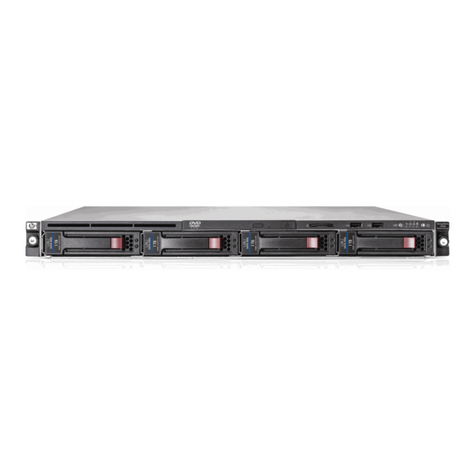
HP
HP X1600 - StorageWorks Network Storage System 5.4TB SAS Model NAS... Release notes
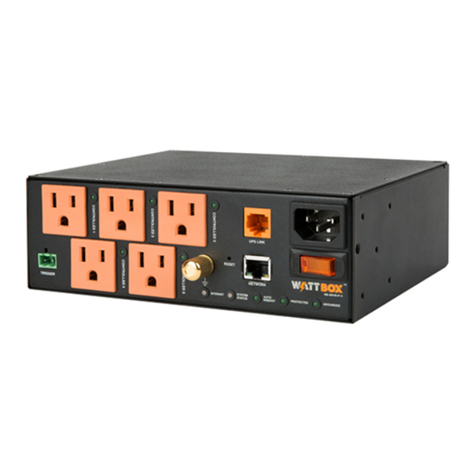
SnapAV
SnapAV WattBox IP Setup & quick start guide
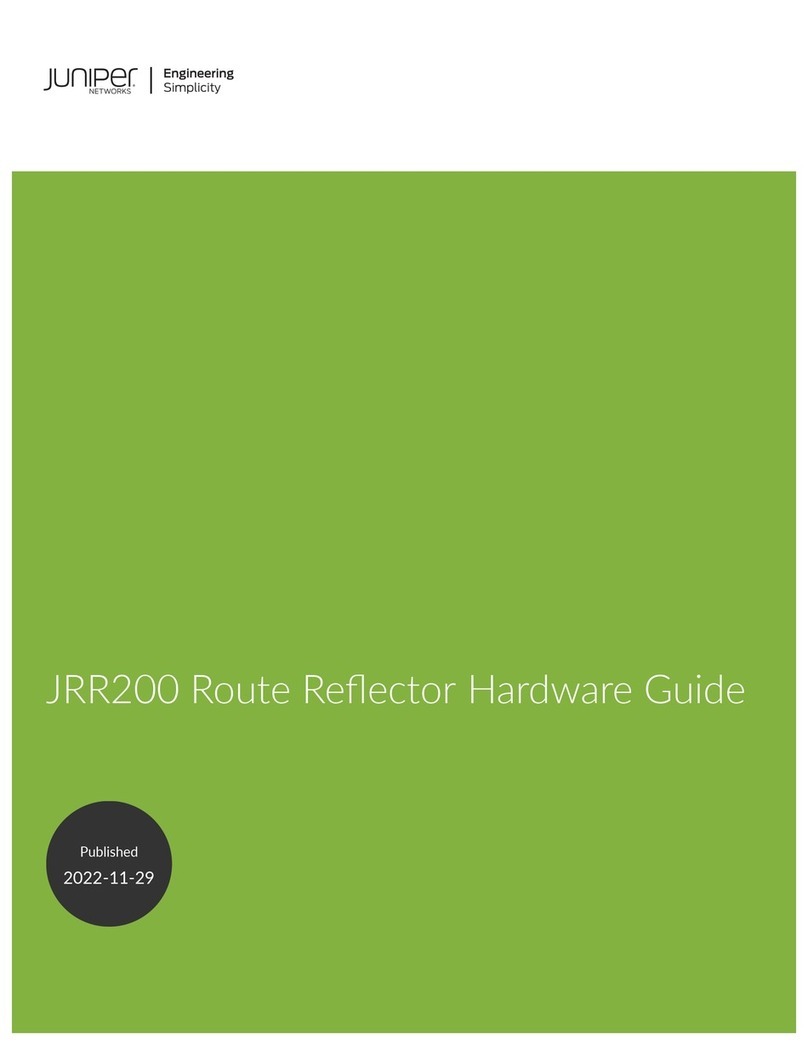
Juniper
Juniper JRR200 Hardware guide
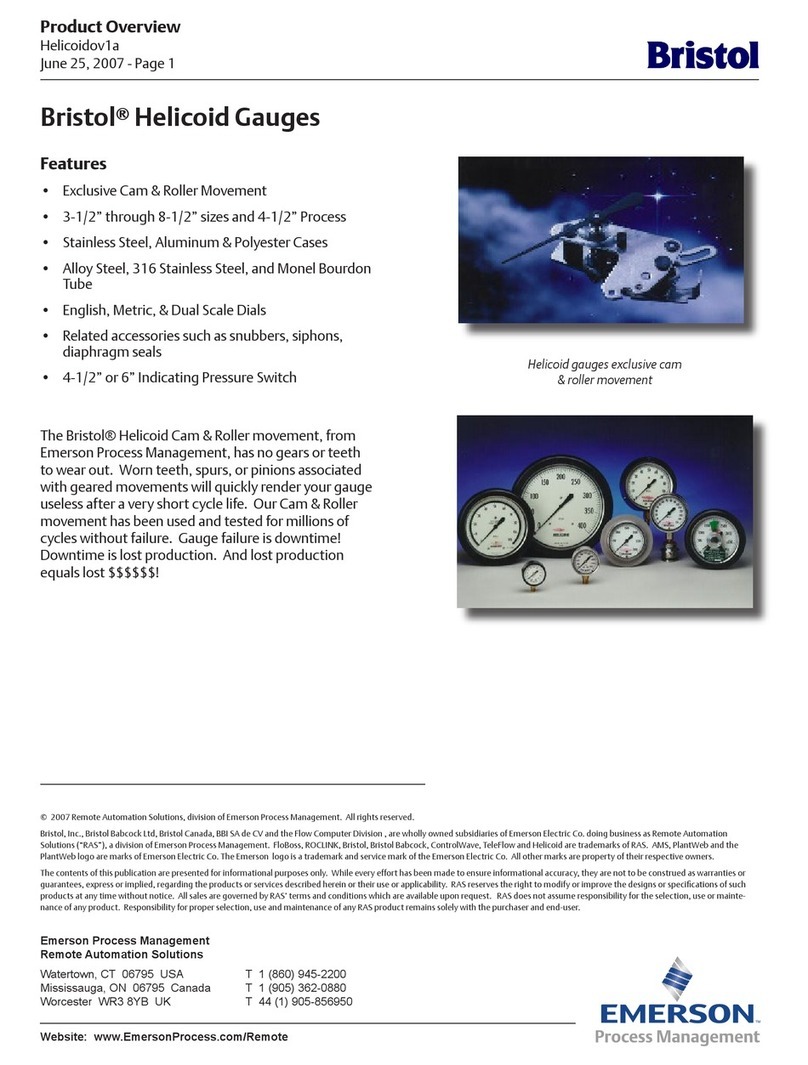
Emerson
Emerson Bristol Helicoid Gauges Product overview
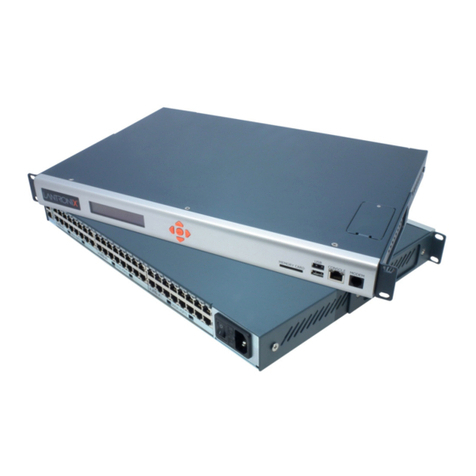
Lantronix
Lantronix SLC 8000 Series user guide
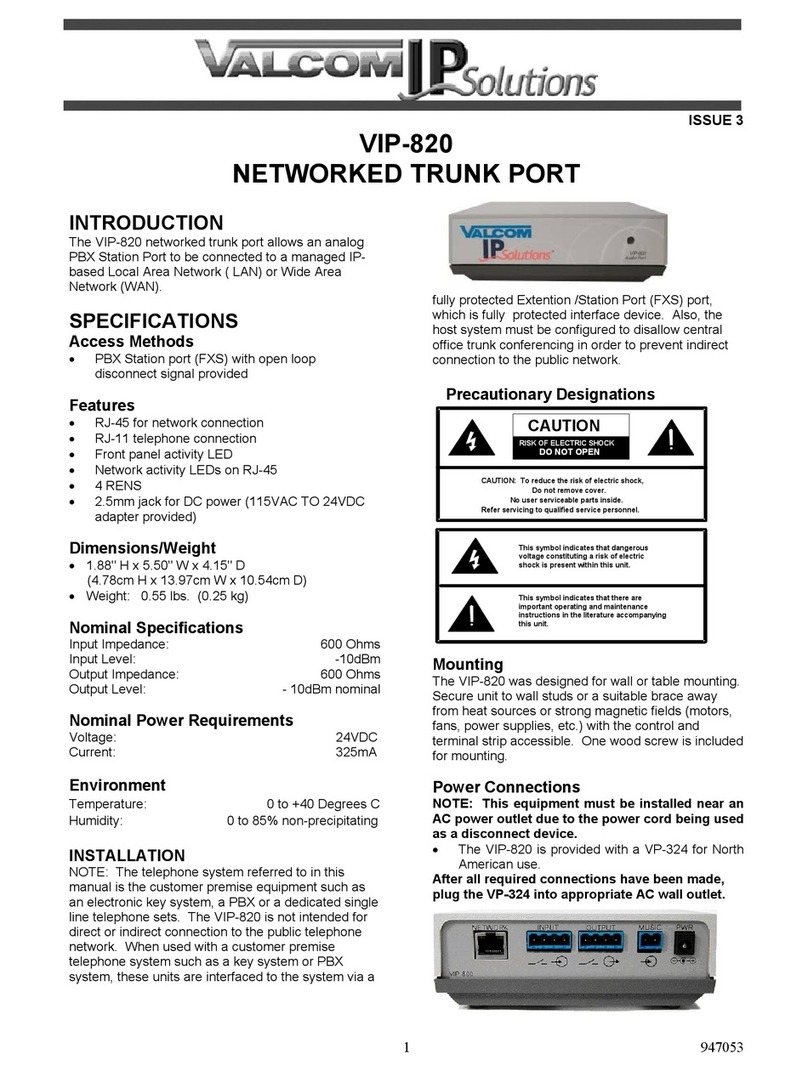
Valcom
Valcom IP Solutions VIP-820 user guide
